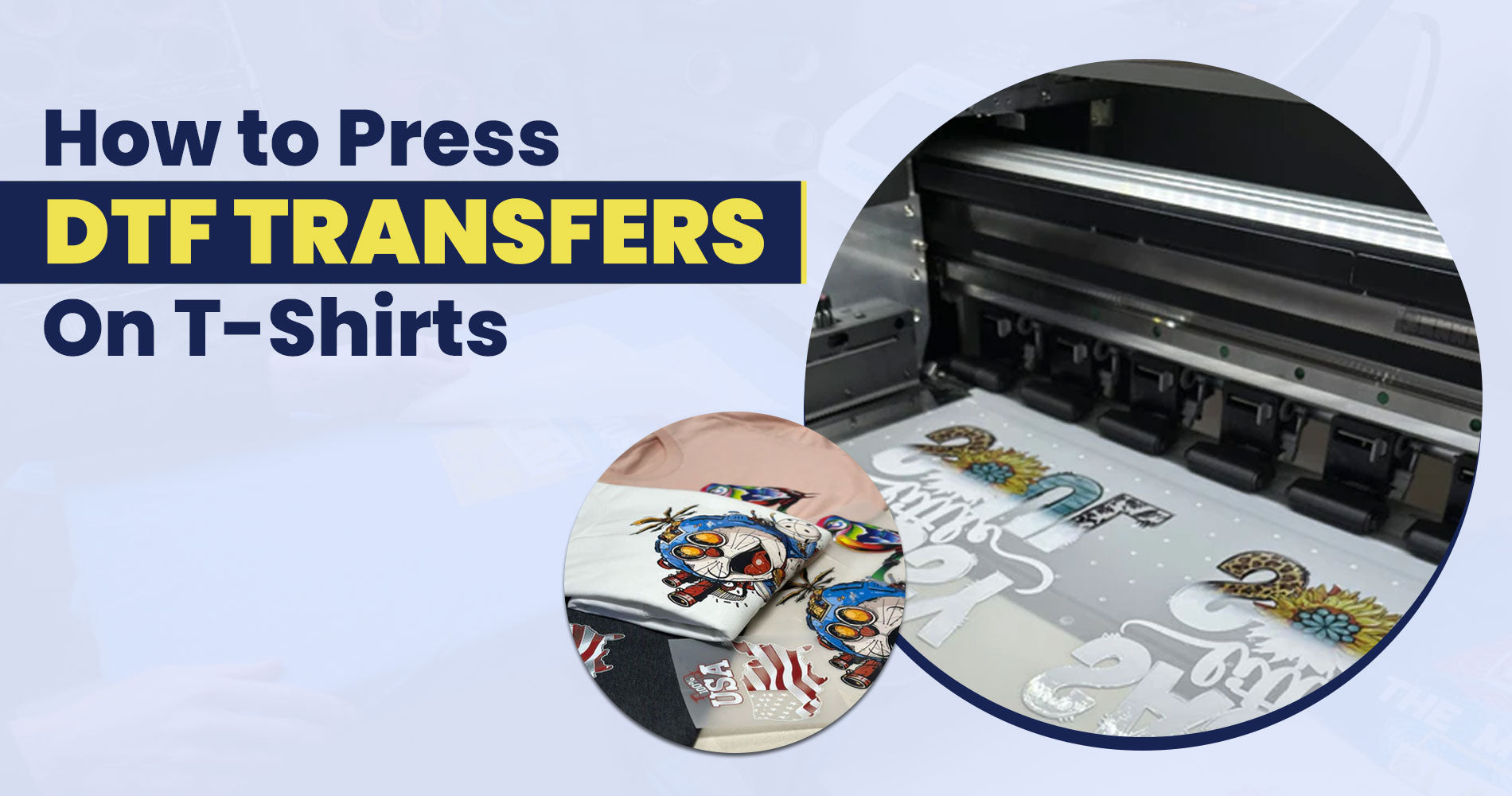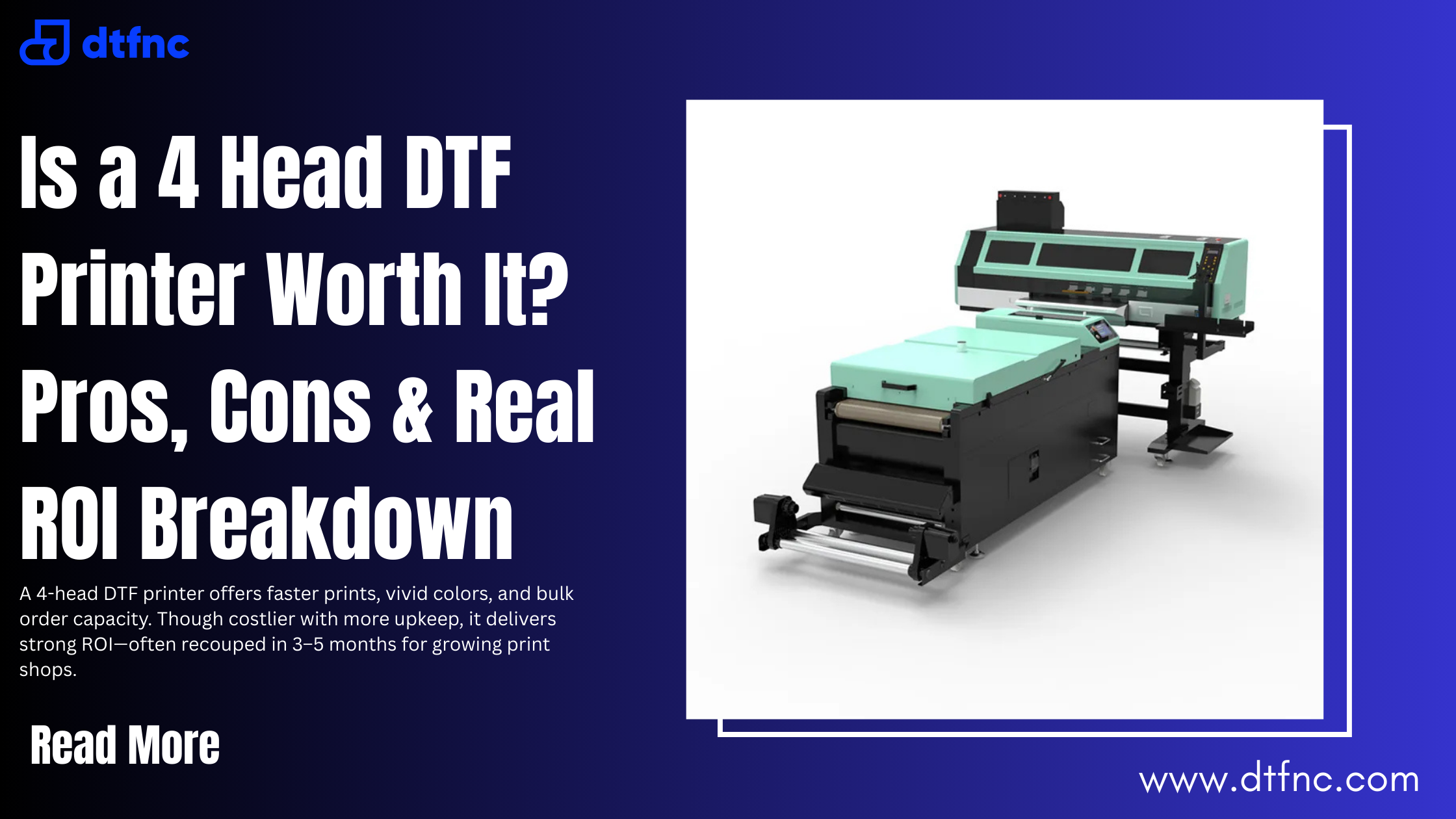If you're looking to add your own unique designs to T-shirts, hats, or other fabric items, Direct to Film (DTF) transfers provide an excellent method for achieving high-quality, full-color prints.
DTF transfers offer vivid and long-lasting results, making them a popular choice for both DIY enthusiasts and professional printers.
In this guide, we'll walk you through the process of pressing DTF transfers onto T-shirts, making sure your creations stand out and last for a long time.
How to press DTF Transfers?
Let's go through a detailed, step-by-step tutorial on how to apply DTF (Direct to Film) transfers onto T-shirts.
Prepare your workspace
Before we go through the process of pressing DTF transfers, it's essential to set up a clean and organized workspace.
Here's what you need to do:
Clean and well-lit area: Choose a space that is free from dust, debris, and other contaminants that could compromise the quality of your prints. Adequate lighting is also crucial for precision.
Heat press machine: Make sure your heat press machine is in good working condition and properly calibrated for the transfer material you plan to use.
DTF transfers: Ensure you have your DTF transfers ready, either printed in-house or obtained from a reliable supplier.
T-shirts or garments: Select the T-shirts or other garments you want to apply the DTF transfers to. Make sure they are clean and free of wrinkles.
Protective gear: Consider wearing heat-resistant gloves to protect your hands from the heat of the press.

Preheat the heat press
Preheating your heat press is an essential step to ensure even heat distribution. Set your heat press to the recommended temperature for your specific DTF transfers, typically around 300-320 degrees Fahrenheit (150-160 degrees Celsius). Allow the press to reach this temperature before proceeding to the next steps.
Also Read: How to Print DTF Transfers: Step-by-Step Guide!
Prepare the garment
Before you place the DTF transfer on the garment, make sure it is properly aligned and secured. Here's what you need to do:
Lay the garment flat: Place the T-shirt or garment on the heat press platen, ensuring it's smooth and wrinkle-free.
Position the transfer: Gently lay the DTF transfer on top of the garment, ensuring that the design is correctly centered and aligned as desired.
Tape the transfer: To keep the transfer in place, you can use heat-resistant tape. This prevents the transfer from shifting during the pressing process.
Position the DTF transfer
Proper placement of the DTF transfer is crucial to achieve a professional-looking result. Ensure that the transfer is positioned accurately on the garment. Take your time to align it perfectly, considering factors like centering and ensuring it's straight.
Apply the heat press
Once you've positioned the DTF transfer on the garment, it's time to press it using the heat press machine. Follow these steps:
Close the heat press: Lower the heat press machine's top platen to apply even pressure on the transfer and garment.
Set the timer: Most DTF transfers require around 11-15 seconds of pressing time, but it's essential to consult the transfer manufacturer's instructions for the exact time and temperature settings.
Apply pressure: Ensure that the heat press applies even pressure on the transfer and garment. The pressure setting may vary depending on your machine, so refer to the manufacturer's guidelines for the correct pressure setting.
Allow DTF transfer to cool for 45-60 seconds:
After the pressing process is complete, don't rush to remove the transfer immediately. Allow it to cool for about 45-60 seconds before carefully and gently peeling the transfer paper away from the garment. This ensures that the ink adheres properly to the fabric.
Post-press the garment (optional, but not really for our standards)
For the best results, you can choose to post-press the garment, even though it's considered optional. This involves placing the garment back into the heat press for a brief moment (5-7 seconds) after the initial pressing. Post-pressing helps to ensure that the DTF transfer is securely bonded to the fabric and enhances its durability.
Allow the garment to cool
Once you've finished the pressing and, if applicable, post-pressing process, let the garment cool completely. This cooling process helps the ink to set, ensuring the longevity of your DTF transfer. After the garment has cooled, you can proudly display your custom-printed masterpiece.
How long to press DTF transfers?
The duration for pressing DTF transfers typically ranges from 11 to 15 seconds, but it's crucial to refer to the specific recommendations provided by the transfer manufacturer. Adhering to the recommended time and temperature settings ensures the best results and the longevity of your prints.
Pressing DTF transfers onto T-shirts can be a fun and creative way to personalize your clothing or create custom merchandise for your business. By following the steps outlined in this guide, you can achieve high-quality, vibrant prints that are not only visually appealing but also durable.
Also Read: How to Store DTF Transfers: 10 Easy Steps
DTF transfers have become increasingly popular in the world of custom apparel due to their ability to produce intricate and full-color designs.
Keep in mind that the quality of your prints also depends on the quality of your transfers and the accuracy of your heat press settings. Investing in high-quality DTF transfers and ensuring that your heat press is properly calibrated will go a long way in achieving outstanding results.
Whether you're a hobbyist looking to add a personal touch to your wardrobe or a professional seeking to create unique merchandise, pressing DTF transfers on T-shirts is a versatile and accessible method that can yield fantastic results.
With a little practice and attention to detail, you can master the art of DTF transfer printing and bring your creative ideas to life.
FAQs
Q. What can DTF transfers be pressed on?
DTF transfers can be pressed on a variety of fabric items, including T-shirts, sweatshirts, hoodies, hats, tote bags, and more. They adhere well to cotton, polyester, and blends of these materials, making them suitable for a wide range of applications.
Q. Can you press a DTF transfer with an iron?
While it is possible to press a DTF transfer with an iron, it is not the recommended method for achieving high-quality and long-lasting results.
Heat presses are designed to provide even and consistent heat and pressure, which is essential for a successful transfer. If you don't have access to a heat press, consider using a commercial printing service for the best outcome.
Q. How long do DTF transfers last before pressing?
DTF transfers can typically be stored for several months before pressing onto a garment. However, it's essential to store them in a cool, dark, and dry environment to prevent any degradation in print quality. Follow the recommendations provided by the transfer manufacturer for the best storage practices.
Q. Can I print DTF transfers at home?
Printing DTF transfers at home is possible if you have the necessary equipment, including a DTF printer and the associated software. However, DTF printing can be a complex process, and you'll need to invest in the right equipment and materials. Many individuals and businesses choose to purchase pre-printed DTF transfers from suppliers for ease and convenience.








